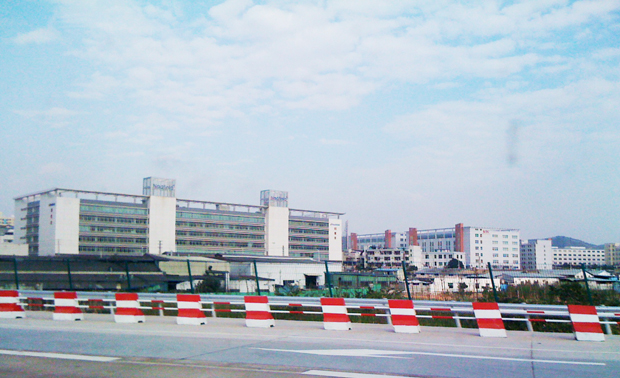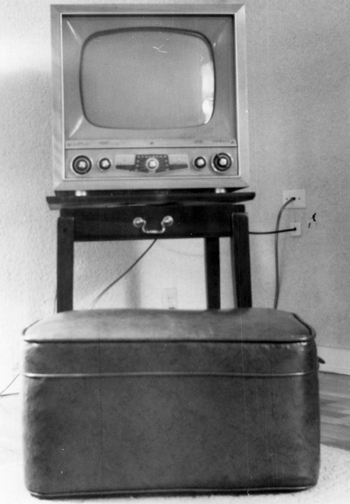John Thackara: Design In The Light of Dark Energy
by: Design Observer: Main Posts, 2012-02-14 15:10:33 UTC
A shortened version of a talk on why the world has to reduce energy consumption, the five per cent energy solution and some of the people around the world who are leading the way.
Piezoelectric devices may soon be able to capture more energy from movement
by: Gizmag Emerging Technology Magazine, 2012-02-24 22:42:34 UTC

Of all the energy-harvesting technologies presently in development, piezoelectric devices offer some of the most intriguing possibilities. They work by converting mechanical stress, which can take the form of movement-caused vibrations, into an electrical charge. This means that things such as
shoes,
roads,
keyboards – or anything else that moves or is subjected to movement – could be outfitted with piezoelectrics, which would produce power. Unfortunately, the range of vibrations that any one device can harness is presently quite limited. Research being conducted at North Carolina’s Duke University, however, could change that...
Continue Reading
Piezoelectric devices may soon be able to capture more energy from movementSection: Research WatchTags: Duke University,
Energy,
Piezoelectric
Related Articles:


 VIDEO: Andrea Air Purifier Uses a Plant to Clean the Air in Your Home
VIDEO: Andrea Air Purifier Uses a Plant to Clean the Air in Your Home
by: Inhabitat , 2012-02-26 05:20:12 UTC
Click here to view the embedded video.
The Andrea Air Purifier is a brilliant partnership between man and plant that accelerates nature’s natural ability to clean air in order to detoxify the atmosphere inside your home. We had a chance to sit down with Tom Hadfield from Andrea to talk about how this amazing gadget is able to clean the air in your home 1000% better than a normal houseplant. Check out our video interview above!




Read the rest of VIDEO: Andrea Air Purifier Uses a Plant to Clean the Air in Your Home
Permalink |
Add to
del.icio.us |
digg
Post tags: air cleaning plants, air clearing plants, andrea air purifier, clean air, clean air naturally, clean home, green cleaning products, green home design, green home products, Greener Gadgets
Yves Behar: Good Design Accelerates the Future
by: Sustainable Design News, 2012-02-25 20:56:02 UTC
 Having one foot in design, and the other in sustainable and social projects, I hear this question quite often: "Why does the world need another chair?"
Having one foot in design, and the other in sustainable and social projects, I hear this question quite often: "Why does the world need another chair?"
My answer is that the world needs another chair/bicycle/car or any new product for that matter, like the world needs another book.
 Apple And Foxconn's Ethics Hit Your Gadget Prices
Apple And Foxconn's Ethics Hit Your Gadget Prices
by: fast company, 2012-02-24 22:19:06 UTC

Last week Foxconn pushed its starting salaries up from 900 yuan ($143) to 1,800 yuan per month, the latest and biggest in wage upticks that began in 2010. Foxconn did this for one main reason: international attention focused on the firm and associated ethical questions surrounding its treatment of workers. The lens through which this attention was focused bears just one name--Apple--because the iPhone seller is one of the biggest companies in the world, and has recently made very bold steps to improve worker conditions. But Foxconn is actually a key supplier for a laundry list of international electronics firms, from Samsung to numerous household American names. Now two of those firms, tech giants HP and Dell, have warned that rising costs in their Chinese supply chain may result in increased in-store prices for their wares.
Just think about that for a minute, let it simmer in your mind. While it's cooking, here're a few spicy facts to add to the flavor.
1. Apple, facing enormous criticism about unfair treatment of workers in its supply chain--who technically work for a totally different company, in a different nation with a vastly different social and economic background--has tried to improve the situation, and has admitted errors publicly.
2. Foxconn faced controversy in the past over its supposed suicide problem. As a harsh statistic it's worth pointing out its actually much lower than the Chinese average. Infer from this what you like about worker conditions. And remember that many potential employees are battling to work at Foxconn compared to its competitors.
3. In early 2011 it was noted that China already had the third highest labor costs in the emerging Asian economies.
4. China's work ethics, worker conditions, and economic situation are radically different than those in the U.S., influenced by Chinese politics, history, local economic effects, laws, social habits, and tradition.
5. Raw global economics and relative currency values mean that the local equivalent of a dollar can go further in many nations than you may expect it to go in the U.S. Anecdotally a can of Coke costs $0.34 at equivalent rates.
Now, here's more to chew on: Thanks to rising Chinese wages, brought on partly by economic booms caused by Western revenues at firms like Foxconn, partly thanks to recent events, Dell and HP have said they'll have to pass on the costs to the consumers. That means many consumers in the U.S., a vocal number among which have recently taken to pressing Apple, and Apple alone, for improvements and an "ethical iPhone."
Let's ignore the odd idea of looking at Chinese work ethics through glasses tinted with Western experience, let's skip merrily past complex global politics and economics, and brush over how critics ignore the fact economies in countries outside the U.S. work very differently, including with different value associated with cash.
Ignoring all this, we can say many Western consumers may be happy to pay more for a premium device if they knew it was produced under more comfortable--Western-like, natch--situations.
But Apple hasn't said it'll raise its prices because of all these moves. In a way it doesn't have to, it can eat any increased costs passed onto it by Foxconn thanks to its high profit margin. Good business planning there.
Dell and HP aren't doing so well financially, and losing increased production costs in their thinner profit margins may not be so easy. But these firms have kept their head below the parapet in the Foxconn battle thus far, and now their bold move is to say "folks must pay more." That's at the least incredibly uninspiring, and the opposite of innovative.
No one's apologizing for Apple, nor saying Foxconn's employees enjoy the very best of conditions. But maybe it's time to suggest other computing giants like Michael Dell's outfit, Korea's government-intertwined big name, and Meg Whitman's new gig start thinking differently. That means applying their innovative, creative thinkers into changing their supply chain dynamics, improving worker conditions, being open about their suppliers, actually adapting their behavior from make-it-low-cost/stack-it-high/sell-it-cheap. Think of all the lovely positive PR.
Related: Apple's Tim Cook on Foxconn: Data Transparency, Work Hours
Related: The Foxconn Effect: Where Will Electronics Be Made If China's Wages Rise?
[Image: Flickr user ttstam]
Chat about this news with Kit Eaton on Twitter and Fast Company too.


 One Way Google Might Crash Cable's Party
One Way Google Might Crash Cable's Party
by: fast company, 2012-02-24 23:11:40 UTC
Is Google Fiber a Trojan Horse?
 While it doesn't take much for Google to make headlines, this week's news that it filed applications to operate a video service in Kansas City was much more than your average "Hey look what Google did" story. From the release of Google TV to its recent YouTube redesign to the way it's been courting professional talent for its YouTube channels, Google has been steadily inching closer to the world of cable TV and shifting its content-delivery strategy from America's computers to America's living rooms.
While it doesn't take much for Google to make headlines, this week's news that it filed applications to operate a video service in Kansas City was much more than your average "Hey look what Google did" story. From the release of Google TV to its recent YouTube redesign to the way it's been courting professional talent for its YouTube channels, Google has been steadily inching closer to the world of cable TV and shifting its content-delivery strategy from America's computers to America's living rooms.
You might remember how Google got caught up in the Kansas City market to begin with--over two years ago, cities across the country jockeyed to become the test market for a high-speed Internet service called Google Fiber. One even went so far as to rename a city landmark after the tech giant. In the end, Kansas City was selected as the lucky community, but was the high-speed Internet offering a Trojan Horse for Google to break into the cable TV business?
The company is keeping a tight lid on its plans; in an email to the Kansas City Star, Google spokesperson Jenna Wandres wrote, "We're still exploring what products will be available when we launch Google Fiber."
Google's application is a bit more revealing, however, stating that it "will utilize national and regional video headend facilities to send IPTV" or Internet Protocol Television, the method AT&T uses to deliver cable programming with its U-Verse service.
But whether Google is merely dipping its toes in cable's television waters or planning a big splash, the company's experimentation with various ways to provide video will likely pay off, says Steve Rosenbaum, the author and entrepreneur behind the video curation platform, Magnify.net.
"If you look at what they've done, they've decided to explore video from all sides, which is very smart given their resources and the shifting sands of content delivery. So they've purchased Motorola Mobility to be in the set top box business, they built and deployed Google TV, they're funding content through YouTube originals. It's all very smart because some of it will work, and they'll get a ton of earnings in the process."
But having the hardware and the broadband is only half the battle. Google also needs eyeballs, which means it will also need access to sportscasts and other high-quality programming that viewers still rely on cable television to provide. To secure that, Rosenbaum says the answer is simple:
"Show up with bags of cash. It's not a whole lot more complicated than that. Rights owners know that Google is trying to shift the playing field. And there's a long history between cable and the leagues and movie studios. Those negotiations haven't always been warm and fuzzy, but in the end, both sides came out okay. So for Google to ask a major licensor to give cable a head-on competitor, they'll have to more than make it worth their while."
[Image: Flickr user gbaku]


 Global Warming Ice Cubes Feature Melting Penguins and Polar Bears
Global Warming Ice Cubes Feature Melting Penguins and Polar Bears
by: Inhabitat , 2012-02-24 23:34:17 UTC

Japanese designer Atsuhiro Hayashi has created a poignant way to keep your favorite beverages chilled: ice cubes shaped like polar bears and penguins on ice floes. These beautiful frosty figurines will help you keep your lemonade cool as summer’s heat sets in while serving as a reminder of the reality of climate change.



Read the rest of Global Warming Ice Cubes Feature Melting Penguins and Polar Bears
Permalink |
Add to
del.icio.us |
digg
Post tags: Design for Awareness, eco inspiration, global warming awareness, Global Warming Ice Cubes, green design, Penguin Ice Cubes, Penguins and Polar Bears, Polar Bear Ice Cubes
What Oat Hulls Can Teach Us About Tapping Employees' Innovation
by: Greener Design, 2012-02-22 12:45:26 UTC
John Hellweg, recently retired from General Mills, shares the effort it took to complete a nearly 25-year-long process to turn a waste stream into a fuel source.

 Green Gamification Takes Root in the Big Apple
Green Gamification Takes Root in the Big Apple
by: Greener Design, 2012-02-22 12:45:59 UTC
At Social Media Week in New York City, two recently sprouted startups joined two innovative established companies to talk about how to harness the power of gaming for the greater good.

 Greening Fast Food Packaging: A Roadmap to Best Practices
Greening Fast Food Packaging: A Roadmap to Best Practices
by: Greener Design, 2012-02-23 18:57:19 UTC
Read about the eight key steps fast food companies should take to make packaging more environmentally friendly.











Comments by our Users
Be the first to write a comment for this item.